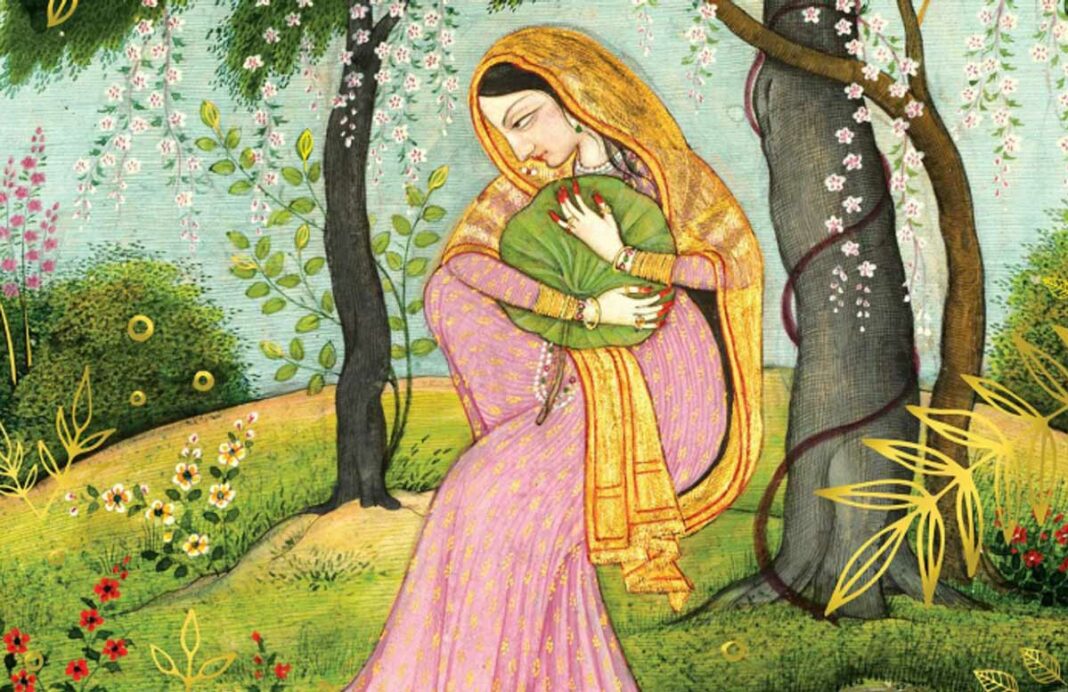What is sacrifice? Why is it so feminine? Can we forgive someone whom we really love? are some questions raised by the award-winning author Chitra Banerjee Divakaruni in her novel “The Forest of Enchantments”. Keep scrolling to read the review of the book.
- Book: The Forest Of Enchantments
- Author: Chitra Banerjee Divakaruni
- Genre: Mythology, Fiction
- Pages: 358
- Age group: 10+
- Published on: 2019
- Publisher: HarperCollins Publishers India
After reading “The Palace of Illusions” I was encouraged to take up Divakaruni’s novel “The Forest of Enchantments”. As a mythological story, my aboriginal experience of reading the novel was exuberating. Indian children are familiar with the legend of Lord Ram who kills the rakshas Ravana. The prolonged narrative of Ramayana is all about the penance of Ram, his justice, sacrifice and delineates his flawless character. Valmiki used hyperbole to exaggerate the heroic deeds of the eldest son of King Dasorath. The morality as associated with epics is retained and just like Milton’s ‘Paradise Lost”, Ramayana too ends in a didactic tone.
However, Divakaruni’s condensed version of Ramayana dismisses the grandeurs of the epic. It retells this folk epic from Sita’s perspective and transgresses her from the usual emblematic acquiescent wife to a rebellious woman. Epics are all about men and their lionizing deeds. Women acts as a mere stimulation to a deadly war. For example, Helen becomes the reason for the war of Troy and Sita’s assault causes Ram to wage a war on Lanka. However, “The Forest of Enchantments” shares not just a glimpse of the world of Sita but also other women characters who underwent a tribulation similar to Ram. The untold minute details of the women of Ayodhya whose fate was sealed with the exile of Ram has been described in a lamentable tone. At the inception the author makes it clear that the story is about the emotions of women and how the men misconceive them.
“For you haven’t understood a woman’s life, the heartbreak at the core of joys, her unexpected alliances and desires, her negotiations where, in the hope of keeping one treasure safe, she must give up another.”
How often orthodox Hindu families have appealed that a women should be a wife like Sita. Her meekness, the way she stands by her husband and takes care of her household are qualities adorned by the parochial society. However, Divakaruni’s approach of Sita is divergent. She is fierce, she is audacious, she is wise, and she is a warrior. The author has done justice to the character of Sita by describing her abduction, her churned up feelings in the garden of Lanka. Moreover, she has penned down the rebelling thoughts of a thousand women who reiterates on being respected and trusted rather than being chastised.
Divakaruni has achieved the unthinkable by questioning Ram’s character as a husband. He cares about his Ayodhya to the extent that he compels Sita to give the agnipariksha twice. All these have been mentioned in the myth but what we never knew is how Sita felt been repudiated, spurned and shamed in front of all. The presence of supernatural beings and the description of Rakshas is pretty alluring. The sardonic twists which we are aware of are still read with equal interest. While giving us a peep at the hypocrite nature of men, Divakaruni does vindication to the characters like Urmila, Mandodari, Kaikeyi, Kaushalya and Suparnarakha. Each time the chorus of “Sita Ram” hits the ears of audience, the author raises an alarming cry reminding us of the void bred in their relationship. It questions the celebrated relationship of Ram; the virtuous and Sita; his ideal wife.
While we are enchanted by Ram’s dharma, we fail to notice the digressions in his character. Divakaruni mocks Ram for having failed as a husband. She chides Dwasarath for his biased treatment towards Kaykei that leads to his fall. The king of Lanka is derided for his ignorance in having failed to interpret the relationship he shared with Sita. Laxman is blinded by his duty towards his elder brother that he forsakes his wife. So is Vibishan whose righteousness ultimately becomes the reason for the loss of his only son. Sage Gautama fallaciously curses his wife who was tricked into sleeping with Lord Indra. The author has spoken about the male characters and have highlighted their faults but finally leaves us to ponder about the ultimate question: What is Dharma??
The rakshas are the predators of humans and they cause chaos by bringing about a disruption in the lives of peaceful people. However, Chitra Banerjee doesn’t side with the Gods either. She describes the sexual culmination of Lord Indra and his immoral conduct of sleeping with the wife of Sage Gautama. The readers are confused as their devotion towards the almighty is put to test. However, Divakaruni refrains from taking sides, her purpose is to expose the truths and the injustices done to women. It is the quest of the readers to read and judge and decide accordingly. Her purpose is silently achieved when Ram says, “In my kingdom, every man will have a voice, no matter how humble he is,” and Sita liberates this statement from gender conventions as she interrogates, “What about the women?”
While several novels based on Sita have been published previously, but Divakaruni’s narrative is idiosyncratic. She establishes her thoughts about the princesses of Mithilia in an elusive manner. She underlines the prejudices of the society and the “Forest of Enchantments” becomes a persuasive story enumerated from a feminist angle. Although, she hasn’t aggrandized much about the battle between the rakshas and Ram, this is because her focus lies in the battles that are waged in the hearts of the forlorn women. The sweetness of falling in love but the sourness and trauma of betrayal makes the novel a perfect read for all. This story is not just of Sita’s but this story is about all women who has been baited at some point of their lives.
Also Read:
- The Challenge Of Cyber Theft And It’s Impact On National Security

- When Honest Feel Harassed: Why India’s High Net-Worth Individuals (HNIs) Are Losing Faith in the System

- India | Readying For Wars

- MRO Monopoly – Is India Sleepwalking Into It Too, Indigo Style?

- Click, Pay and Get Cheated: How Amazon India’s Fake Seller Network Is Looting Innocent Consumers

- Adani’s Next Airspace Play: Basraon’s FSTC in Sights




















